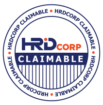Finance for Non-Finance Training Course
Popular
Description
Course Outline
Module 1: Introduction to Finance
- Importance of Finance in Business Decision-Making
- Key Financial Terminologies
- Basic Accounting Principles and Concepts
Module 2: Understanding Financial Statements
- Balance Sheet: Structure and Components
- Income Statement: Revenue, Expenses, and Profit
- Cash Flow Statement: Operating, Investing, and Financing Activities
- Connecting Financial Statements
Module 3: Financial Ratios and Analysis
- Liquidity Ratios
- Profitability Ratios
- Efficiency Ratios
- Solvency Ratios
Module 4: Budgeting and Forecasting
- Basics of Budget Preparation
- Types of Budgets: Operating vs. Capital
- Forecasting Techniques
- Variance Analysis
Module 5: Financial Decision-Making Tools
- Cost-Benefit Analysis
- Break-Even Analysis
- Time Value of Money: Present Value and Future Value
- Basics of Investment Appraisal: NPV, IRR, and Payback Period
Module 6: Managing Financial Risks
- Understanding Financial Risks
- Tools for Risk Management
- Scenario and Sensitivity Analysis
Module 7: Practical Applications and Case Studies
- Analyzing Real-Life Financial Statements
- Hands-On Exercises on Budgeting
- Case Studies: Financial Decision-Making in Different Industries
Course Objectives
- To demystify financial concepts and principles for non-finance professionals.
- To provide participants with the ability to read and interpret financial statements.
- To equip participants with tools for analyzing financial performance and making informed decisions.
- To enhance participants’ understanding of budgeting, forecasting, and financial planning.
- To empower participants to apply financial concepts to practical scenarios in their workplace.
Learning Outcomes
By the end of this course, participants will:
- Understand fundamental financial concepts and terminologies.
- Confidently analyze financial statements to assess an organization’s financial health.
- Use financial ratios and tools to evaluate performance and support decision-making.
- Prepare and monitor budgets and perform variance analysis.
- Apply financial principles to solve business problems and make data-driven decisions.
- Communicate effectively with finance professionals within their organization.
Training Methodology
- Interactive Lectures: Explain key concepts using relatable examples and visuals.
- Hands-On Exercises: Provide real-world financial statements, templates, and tools for participants to practice.
- Case Studies: Discuss practical scenarios from various industries to enhance understanding and relevance.
- Group Discussions: Encourage collaboration and sharing of insights to reinforce learning.
- Simulations and Role-Playing: Facilitate decision-making exercises to mimic real-life situations.
- Quizzes and Feedback Sessions: Assess knowledge retention and provide constructive feedback.
Location
Review
Write a ReviewThere are no reviews yet.
















